RUSSIAN ACTS
KONTA Television was founded in the early part of 2017. The company has been airing Live-stream music channels for almost 4 years. The main directive and focus of our channel were to bring to our audiences the most current and diverse musical performers in the industry as well as introduce, promote, and market new talent from around the world. We air a distinctive range of multi-national music videos 24 hours a day and seven days a week. Our music channel is fast becoming one of the fastest-growing music channels in the world encompassing all ethnic urban and modern artists that use our channel to reach a global audience. By interviewing and airing people ranging from vocalists/bands/live performers and songwriters KONTA Television has broken all interracial boundaries to be the first to bring you a fresh and innovative music channel where the creative talents of artists from all countries can be heard for the the first time in one collective station.

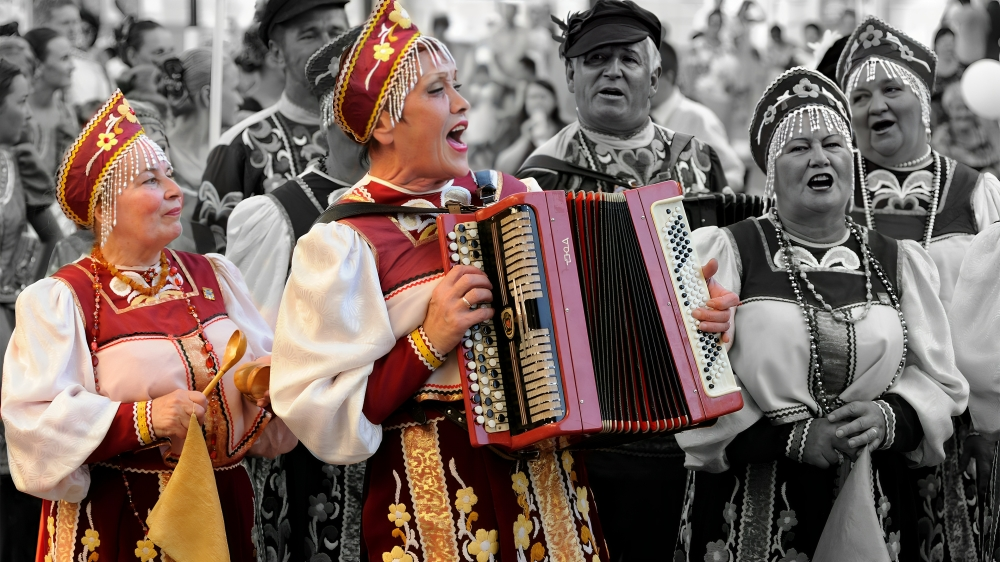
Russian Classical Music
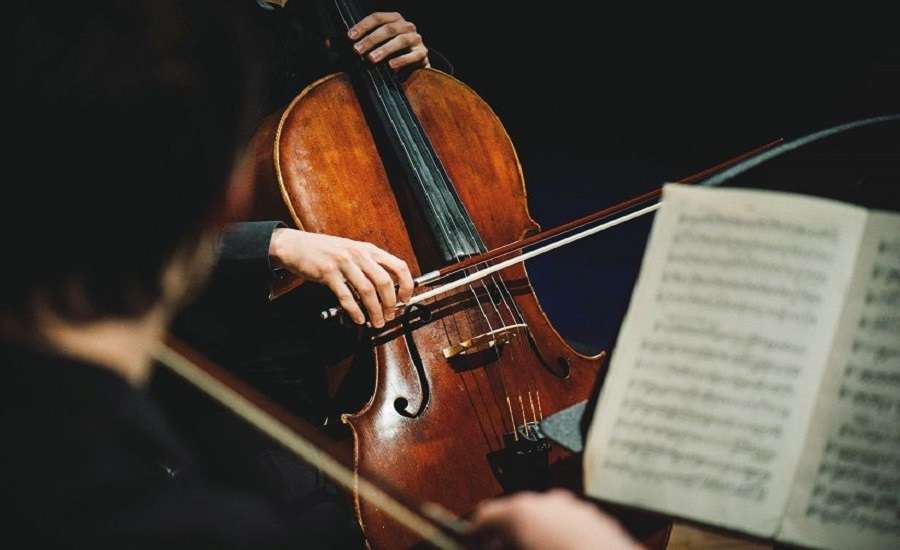
A Timeline of Russian Classical Music
- Until the 18th century, Russian music consisted mainly of church music, folk songs, and music for dances. Among the bourgeoisie, Italian, French, and German operas were especially popular.
- Two opposing groups of composers were founded in the 19th century: the Russian Music Society, a pro-Western association of composers led by the brothers Anton and Nikolay Rubinstein, and the “Mighty Handful”, a group of composers known for using elements of Russian folk and religious music and folk themes in their works. Among the most famous members of the “Mighty Handful” are Rimsky-Korsakov, Mussorgsky, and Balakirev.
- At the beginning of the 20th century, romances written and performed in the Russian, Caucasian, Gypsy, and Italian styles became popular in Russia. The greatest and most popular singers of the romance movement were Fyodor Shalyapin, Alexandr Vertinsky, Konstantin Sokolsky, and Pyotr Leshchenko.
- In the 20th century, the pressure of the Soviet authorities caused many artists to leave the Soviet Union. At the same period a musical underground of folk-oriented and rock groups formed. Magnitizidat recorded and distributed forbidden folk, rock, and jazz works in small batches.
- After Communism fell, many exiled artists including Vladimir Horowitz and Mstislav Rostropovich returned to Russia to continue producing and performing their music. During this period, much of Russian rock music lost the creativity of its underground period and tended towards imitating Western groups in style.
When people decide to visit Russia, they endure the headaches that come with obtaining a visa and the long and arduous flight. (If you are not from the Antipodes or thereabouts you have no right to complain about the flight – ed.) But what all these tourists have in common is that they appreciate the art, architecture, and history of Russia, and want to learn more about it. Classical music is one of the most highly-revered arts in Russia. Russian classical music has a distinctive history, separate from Western Europe and at the same time highly influenced by Western countries. Some of the most internationally-renowned composers came St. Petersburg and Moscow as well as from smaller towns. Ballet music composers, opera composers, and even jazz musicians all made their mark in Russia’s history. Tchaikovsky, Rachmaninoff and Shostakovich are only some of the big names that every music lover will recognize, but there are many more that have their roots in Russia. The following article briefly explains classical music’s place in Russian history, its evolution, and its current position.
The Eighteenth and Nineteenth Centuries
Russia consists of dozens of different ethnic groups, each of which has its own forms of traditions and folk music. During the Soviet era, music was highly scrutinized and kept within certain boundaries of content and innovation. After the fall of the USSR, Western-style rock and pop music became the most popular forms in Russia, perhaps because they symbolized democracy, freedom, and a cultural divide from the repressive Communistic rule. But before the Soviet era, Russian composers and musicians were innovative and influential.
Until the 18th century, Russian music consisted mainly of church music, folk songs, and dances. In the 1700s, Italian, French, and German operas were introduced to Russia, making opera a popular art form among the bourgeoisie.
In the 19th century, Russia began making an original contribution to world music nearly as significant as its contribution in literature. In the first half of the century, Mikhail Glinka (1804-57) initiated the application of purely Russian folk and religious music to classical compositions. His operas Ruslan and Lyudmila and A Life for the Tsar, are considered ground-breaking works in the establishment of Russian national music, although they are loosely based and modeled on Italian opera.
In 1859 the Russian Music Society was founded to foster musical performances and appreciation for classical music from Western Europe. The most influential figures in the society were the composer Anton Rubinstein and his brother Nikolay, who founded influential conservatories in Moscow and St. Petersburg (Anton Rubinstein also was one of the best pianists of the 19th century).
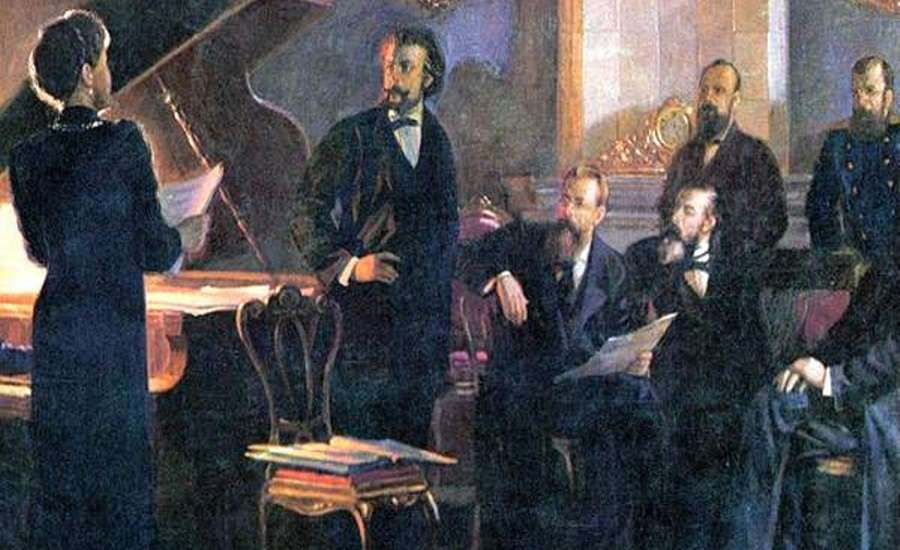
In the second half of the 19th century, a group of composers that came to be known as the “Mighty Handful” or the “Mighty Handful” – Miliy Balakirev, Aleksandr Borodin, Cesar Cui, Modest Mussorgsky, and Nikolay Rimsky-Korsakov – continued Glinka’s movement away from the imitation of European classical music by adding in elements of Russian folk music and tales. Although most of them wrote Western-influenced music, this group challenged the Russian Music Society’s conservatism with a large body of work thematically based on Russia’s history and legends and musically based on its folk and religious music; not surprisingly, the two groups were more or less rivals. Among the Mighty Handful’s most notable works are Rimsky-Korsakov’s symphonic suite Scheherazade and the operas The Snow Maiden and Sadko, Mussorgsky’s operas Boris Godunov and Khovanshchina, and Borodin’s opera Prince Igor. Balakirev, a protégé of Glinka, was the founder and leader of this group.
Peter Ilyich Tchaikovsky stood outside this group. While he didn’t take sides in the above-described ideological battle (he was too busy writing music), his music did to a large extent resemble Western European music. He produced a number of enduring symphonies, operas, and ballets, and even during his lifetime he was considered one of the world’s premier composers.
The generation that followed the Mighty Handful and Tchaikovsky in the late nineteenth century included talented and innovative figures such as Sergey Rachmaninoff, a genius pianist and composer, who immigrated to Germany in 1906, Rimsky-Korsakov’s student Aleksandr Glazunov, who emigrated from Russia in 1928 and Aleksandr Skryabin, who injected elements of mysticism and literary symbolism in his piano and orchestral works. Prominent Russian (and, due to the time in which they composed, Soviet) composers of the 20th century include Stravinsky, Prokofiev, and Shostakovich.
Traditional music didn’t die out among all this internationalism. In the late nineteenth century, Count Uvavrov led a campaign of nationalist revival which spawned the first professional orchestras with traditional instruments, beginning with Vassily Andreyev, who used the balalaika in an orchestra late in the century. Just after the dawn of the 20th century, Mitrofan Pyatnitsky founded the Pyatnitsky Choir of rural peasant singers.
The Soviet Era
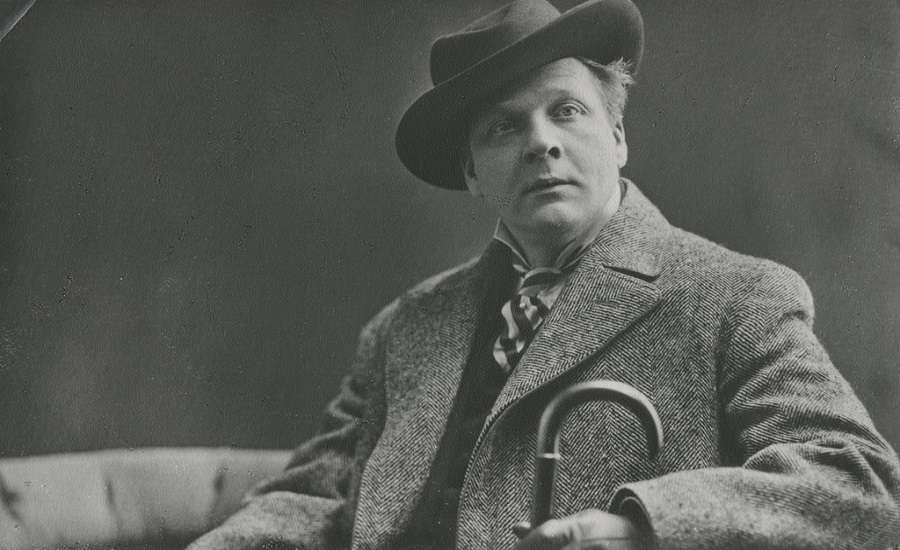
In the 1910s romances in exotic Russian, Caucasian, Gypsy and Italian styles became popular in Russia. The greatest and most popular singers of romances – chief among them Fyodor Shalyapin – usually sang in operas at the same time they were pursuing this newer genre of popular music. Singers, for example, Alexandr Vertinsky, Konstantin Sokolsky, and Pyotr Leshchenko, usually composed music and wrote lyrics themselves, However, experimentation did not prosper much with the onset of Soviet rule and oppression.
In the 20th century, Russia continued to produce some of the world’s foremost composers and musicians, despite the suppression by Soviet authorities of music and other artistic thought, ideas, and performances. Restrictions on what musicians played and where they performed caused many artists to leave the Soviet Union either voluntarily or through forced exile, but the works of the emigrants continued to draw large audiences whenever they were performed. In the 1960s, Vyacheslav Shchurov organized concerts featuring folk singers from all over Russia. Shchurov thus attracted a wave of ethnomusicologists, who recorded rural folk musicians. Perhaps the most important group to follow in Shchurov’s wake was the Dmitri Pokrovsky Ensemble. Moreover, a group of musicians called bards arose at the same time. They were generally ignored by the state, but bards like Vladimir Vysotsky’s helped lead a popular return to traditional music.
The same period spawned the birth of Russian rock, which all began with the band Pojuschie Gitary. They created a style called VIA and later released the first Russian rock opera, Orpheus and Eurydice. Other rock bands of the era included Tcvety, Sinyaya Ptica, and Golubiye Gitary.
By the 1980s, popular folk-oriented groups had arisen. The Cossack Kazachy Krug and Pesen Zemli became the most popular. A musical underground (magnitizdat) also arose, where poetic and satirical musicians like Bulat Okudzhava and Vladimir Vysotskiy gained black market fame playing jazz and rock music. They also set their poetry to music and became popular entertainers with a satirical message. Magnitizidat also recorded and distributed forbidden folk, rock, and jazz works in small batches.
Jazz performances were permitted by all Soviet regimes, and jazz became one of Russia’s most popular music forms. In the 1980s, the Ganelin Trio was the best-known Russian jazz combo, performing in Europe and the United States. Jazz musicians from the West began playing regularly in the Soviet Union in the 1980s.
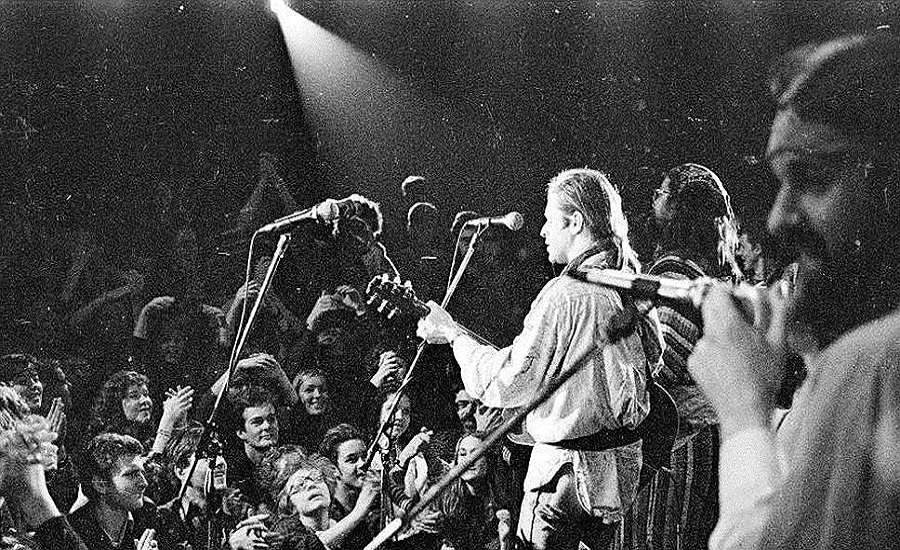
Rock music on the other hand was strictly controlled by Soviet Authorities, and recordings were strictly limited. Nonetheless, Russia’s youth was fascinated with the rock music of the West. Later in the 80s, when the Communist regime began to weaken, there was more of a liberal atmosphere concerning music in Russia. Several notable Soviet rock groups emerged which were considered innovative, and such groups proliferated throughout the 80s. The Leningrad Rock Club, one of a national network of performance clubs in 1986, was the most important outlet for sanctioned rock music.
Post-Soviet Era
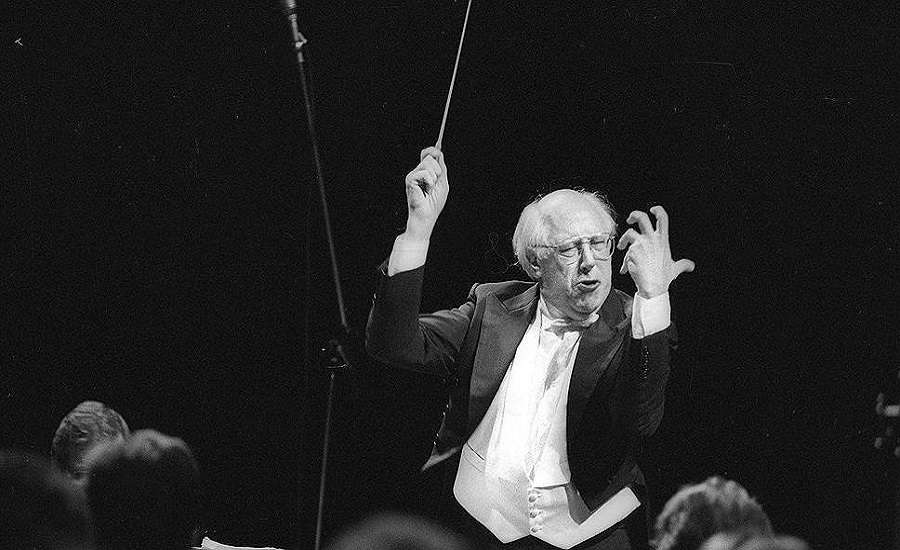
After Communism fell and democracy was restored in the former Soviet Union, the Gorbachev era loosened many of the restrictions placed on creative thought and the arts, and many artists returned back to their homeland to continue producing and performing their music. The pianist Vladimir Horowitz, who left the Soviet Union in 1925, made a successful return performance in Moscow in 1986, and cellist Mstislav Rostropovich returned to Russia as a conductor on tour with the National Symphony Orchestra of Washington D.C. Rock music, however, seemed to have lost that innovative, satirical, and unique edge of the magnitizdat period, and experts have noted the tendency of rock groups to simply imitate Western groups in style.
Folk music is certainly the oldest of them. The roots of Russian folk music date as far back as to the  middle of the first millennium AC, when Slavic tribes settled in the European part of the present territory of Russia. Those tribes were famous for their love and mastery of music, singing, and dancing. From generation to generation folk ensembles and singers try and keep the authentic Russian music traditions alive. Folk song and dance ensembles present old country repertoire with songs often blending pagan roots and Christian symbolism, songs either sad and drawling or merry, as well as dances – dignified and graceful or rollicking and vigorous, accompanied with traditional musical instruments (balalaikas, whistles, guslis, wooden spoons, bayan, etc.) and colorful costumes. These days enjoy the ‘new folk wave’ bringing together old traditions, modern technologies, and experimental music styles.
middle of the first millennium AC, when Slavic tribes settled in the European part of the present territory of Russia. Those tribes were famous for their love and mastery of music, singing, and dancing. From generation to generation folk ensembles and singers try and keep the authentic Russian music traditions alive. Folk song and dance ensembles present old country repertoire with songs often blending pagan roots and Christian symbolism, songs either sad and drawling or merry, as well as dances – dignified and graceful or rollicking and vigorous, accompanied with traditional musical instruments (balalaikas, whistles, guslis, wooden spoons, bayan, etc.) and colorful costumes. These days enjoy the ‘new folk wave’ bringing together old traditions, modern technologies, and experimental music styles.
Russian Folk Instruments Ancient chronicles, epics, and medieval foreign writers’ notes bear all evidence that the Slavs were extremely fond of music. Karamzin points out in History of the Russian State: “The Northern Venedi (the old name for Slavs) in the 6th century said to the Greek Emperor that the major delight of their living was music and that on the road they usually took not weapons but citharas or gusli invented by them”. As time passed by lots of new musical instruments came to be used by folk musicians. Nowadays different styles are in fashion yet there is still hope that interest in traditional Russian music will never ever fade. Traditional folk music instruments have come to be used in lots of modern styles and eclectic ways in recent years.
Ancient chronicles, epics, and medieval foreign writers’ notes bear all evidence that the Slavs were extremely fond of music. Karamzin points out in History of the Russian State: “The Northern Venedi (the old name for Slavs) in the 6th century said to the Greek Emperor that the major delight of their living was music and that on the road they usually took not weapons but citharas or gusli invented by them”. As time passed by lots of new musical instruments came to be used by folk musicians. Nowadays different styles are in fashion yet there is still hope that interest in traditional Russian music will never ever fade. Traditional folk music instruments have come to be used in lots of modern styles and eclectic ways in recent years.
 Russian national composer school acquired its individual shape rather late, only by the mid-19th century. However, once getting mature Russian music rushes into the world music arena. West European musicians and critics of the 19th century could not but appreciate most peculiar features of Russian music, such as the use of rich and fresh folk music material of Eurasian type, blending ‘eastern’ and ‘western’ elements; and absolutely new forms of symphonic development – synthetic rather than analytical, as was the convention with the West European symphony. The appearance of such figures as Skryabin, Stravinsky, and Prokofiev in the early 20th century put Russian music in the avant-garde of the world music process.
Russian national composer school acquired its individual shape rather late, only by the mid-19th century. However, once getting mature Russian music rushes into the world music arena. West European musicians and critics of the 19th century could not but appreciate most peculiar features of Russian music, such as the use of rich and fresh folk music material of Eurasian type, blending ‘eastern’ and ‘western’ elements; and absolutely new forms of symphonic development – synthetic rather than analytical, as was the convention with the West European symphony. The appearance of such figures as Skryabin, Stravinsky, and Prokofiev in the early 20th century put Russian music in the avant-garde of the world music process.
Opera
Russian opera is on par with Italian, German, and French operas in terms of their worldwide significance. This is mainly due to the range of operas created in the second half of the 19th century and certain operas of the 20th century. Among the most popular operas on the world stage of the late 20th – early 21st cc are Boris Godunov by Musorgsky, Pikovaya Dama/Queen of Spades and Eugeny Onegin by Chaikovsky, Knyaz Igor/Prince Igor by Borodin, and Zolotoi Petushok/Golden Cockerel by Rimsky-Korsakov, all dating back to the 19th century. Of the 20th century’s operas stand out Ognenny Angel/Fiery Angel by Prokofiev and Lady McBeth of Mzensk district by Shostakovitch.
This is mainly due to the range of operas created in the second half of the 19th century and certain operas of the 20th century. Among the most popular operas on the world stage of the late 20th – early 21st cc are Boris Godunov by Musorgsky, Pikovaya Dama/Queen of Spades and Eugeny Onegin by Chaikovsky, Knyaz Igor/Prince Igor by Borodin, and Zolotoi Petushok/Golden Cockerel by Rimsky-Korsakov, all dating back to the 19th century. Of the 20th century’s operas stand out Ognenny Angel/Fiery Angel by Prokofiev and Lady McBeth of Mzensk district by Shostakovitch.
Russian Romance Russian romance means intimate lyrical songs that touch the soul, feelings set to music, and poetry that makes one cry and smile. Romance as a music genre is a traditional Russian type of music creativity: it is in romance that the so-called “mysterious Russian soul” has found ways of expressing its passions. Just recall the famous “Ochi Chyornie” (Black Eyes)!
Russian romance means intimate lyrical songs that touch the soul, feelings set to music, and poetry that makes one cry and smile. Romance as a music genre is a traditional Russian type of music creativity: it is in romance that the so-called “mysterious Russian soul” has found ways of expressing its passions. Just recall the famous “Ochi Chyornie” (Black Eyes)!
Great singers of the 20th century
Sweeping various style definitions aside we would like to introduce you to the most prominent singers of the 20th century who belonged to various genres. One thing uniting them is that their charismatic personalities and artistry left an influential trace in the musical history of Russia. Here you can read about the life and creative work of Fyodor Shalyapin, Sergey Lemeshev, Claudia Shulzhenko, Isabella Yurieva, Leonid Utesov, Mark Bernes, and other legendary singers who deserve the live attention of any generation.
Author’s song
An author’s song as a genre supposes that a songwriter performs one’s songs  alone to his/her own guitar accompaniment (or some other instrument, which is rare). Singers to the guitar are also called bards. Originating as a free alternative to semi-official mainstream concert music in the Soviet Union, this genre remains non-commercial and in this regard perhaps more independent than any other. Great attention is paid to the meaning of lyrics, aspiring to convey some deep message. Read about the phenomenon of bard songs in Russia and about such distinguished authors and performers as Alexander Vertinsky, Boulat Okoudjava, Vladimir Vysotsky and Alexander Bashlachev. The author’s song is a chamber genre aimed at a peculiar audience as compared to rock music attracting a wide public (especially the youth) due to its versatile sound and eccentricity.
alone to his/her own guitar accompaniment (or some other instrument, which is rare). Singers to the guitar are also called bards. Originating as a free alternative to semi-official mainstream concert music in the Soviet Union, this genre remains non-commercial and in this regard perhaps more independent than any other. Great attention is paid to the meaning of lyrics, aspiring to convey some deep message. Read about the phenomenon of bard songs in Russia and about such distinguished authors and performers as Alexander Vertinsky, Boulat Okoudjava, Vladimir Vysotsky and Alexander Bashlachev. The author’s song is a chamber genre aimed at a peculiar audience as compared to rock music attracting a wide public (especially the youth) due to its versatile sound and eccentricity.
Pop Music Genres of pop music widely spread in modern Russia and CIS countries started taking shape back in the USSR epoch and were somewhat different from similar styles both of the West and the East. By the early 1960s Russian-language pop music developed into one of the biggest music markets in the world. In the 1990s when the country was undergoing severe economic and political crisis Russia and Moscow in particular still remained significant producers of the Russian-language music industry. Strange as it may seem lots of famous pop music hits were recorded in that very period.
Genres of pop music widely spread in modern Russia and CIS countries started taking shape back in the USSR epoch and were somewhat different from similar styles both of the West and the East. By the early 1960s Russian-language pop music developed into one of the biggest music markets in the world. In the 1990s when the country was undergoing severe economic and political crisis Russia and Moscow in particular still remained significant producers of the Russian-language music industry. Strange as it may seem lots of famous pop music hits were recorded in that very period.
Rock music Rock music came to Russia from the West and for a long time remained underground and rebellious to the stale oppressive atmosphere of the Soviet Establishment.
Rock music came to Russia from the West and for a long time remained underground and rebellious to the stale oppressive atmosphere of the Soviet Establishment.
For a long time having no opportunity to use good professional instruments and up-to-date electronic equipment for recording and sound mixing, Russian rock musicians got accustomed to a peculiar minimalism in music. Guitar and unpretentious percussion ‘beat’ – that was practically all to comprise the acoustic palette of Russian rock, which from the very beginning tended to attach the first importance to the lyrics and the message conveyed. Rock music became a specific Russian phenomenon mainly due to poet and singer Alexander Bashlachev. A perfectly Russian author he influenced many rock musicians and played an important role for Russian rock to advert to the roots of Russian music folklore and imparted the genuine Russian spirit to it.
Brief History of Jazz in Russia Jazz stage emerged in the USSR in the 1920s, parallel to its flourishing in the USA. The first Russian jazz orchestra was established in Moscow in 1922. Jazz started gaining wide popularity in the 1930s, to a great extent thanks to the Leningrad jazz ensemble headed by famous actor and singer Leonid Utyosov. Soviet authorities displayed quite an ambiguous attitude towards jazz: Russian jazzmen, as a rule, were not banned, though jazz as such was severely criticized in the context of overall criticism of Western culture on the whole.
Jazz stage emerged in the USSR in the 1920s, parallel to its flourishing in the USA. The first Russian jazz orchestra was established in Moscow in 1922. Jazz started gaining wide popularity in the 1930s, to a great extent thanks to the Leningrad jazz ensemble headed by famous actor and singer Leonid Utyosov. Soviet authorities displayed quite an ambiguous attitude towards jazz: Russian jazzmen, as a rule, were not banned, though jazz as such was severely criticized in the context of overall criticism of Western culture on the whole.
Punk Rock & Alternative Rock in Russia Punk music penetrated into the USSR in the early 1980s. From the mid-1980s pank rock bands started to spring up all around the USSR and as time passed by they somehow fell into two categories: central and Siberian ones. Alternative rock originated in Russia in the mid-1990s. Bands playing alternative rock and alternative metal are often referred to with the same definition “alternative”, without dividing them from each other.
Punk music penetrated into the USSR in the early 1980s. From the mid-1980s pank rock bands started to spring up all around the USSR and as time passed by they somehow fell into two categories: central and Siberian ones. Alternative rock originated in Russia in the mid-1990s. Bands playing alternative rock and alternative metal are often referred to with the same definition “alternative”, without dividing them from each other.
Country Music in Russia Even in Soviet Russia American style of country music was growing in popularity. In 1975 a Russian student band named Ornament already performed real country disguised as songs of struggle and protest. Though today’s palette of Russian country music adherents is not that rich and versatile in comparison with America and Europe, it still has something to offer.
Even in Soviet Russia American style of country music was growing in popularity. In 1975 a Russian student band named Ornament already performed real country disguised as songs of struggle and protest. Though today’s palette of Russian country music adherents is not that rich and versatile in comparison with America and Europe, it still has something to offer.
Celtic Music in Russia Just like country music, so untypical for Russia, Celtic music is also popular among the Russians. The talking about affinity of “mysterious” Irish and Russian minds is not casual: they really have much in common. Yet, Russia missed the first wave of interest in Irish music that overwhelmed the world in the 1960s-70s. But then in the early 1990s we fitted very well into the second one and till date have been taking an active part in this global process.
Just like country music, so untypical for Russia, Celtic music is also popular among the Russians. The talking about affinity of “mysterious” Irish and Russian minds is not casual: they really have much in common. Yet, Russia missed the first wave of interest in Irish music that overwhelmed the world in the 1960s-70s. But then in the early 1990s we fitted very well into the second one and till date have been taking an active part in this global process.
A Glimpse of Hip-Hop Culture in Russia Hip hop gained fame, then rather limited, in the second half of the 1980s, when fancy-for-break dance started in this country. Yet, English-language rap compositions as such were little known among music lovers then. The first Russian language rap performers appeared in the early 1990s, Bogdan Titomir enjoying fame, whereas more underground sorts of Russian hip hop (such as “MD&C Pavlov” and the like) were far from being a success. The market of Russian hip hop as an industry took its shape only in the late 1990s.
Hip hop gained fame, then rather limited, in the second half of the 1980s, when fancy-for-break dance started in this country. Yet, English-language rap compositions as such were little known among music lovers then. The first Russian language rap performers appeared in the early 1990s, Bogdan Titomir enjoying fame, whereas more underground sorts of Russian hip hop (such as “MD&C Pavlov” and the like) were far from being a success. The market of Russian hip hop as an industry took its shape only in the late 1990s.
russian musical instrument
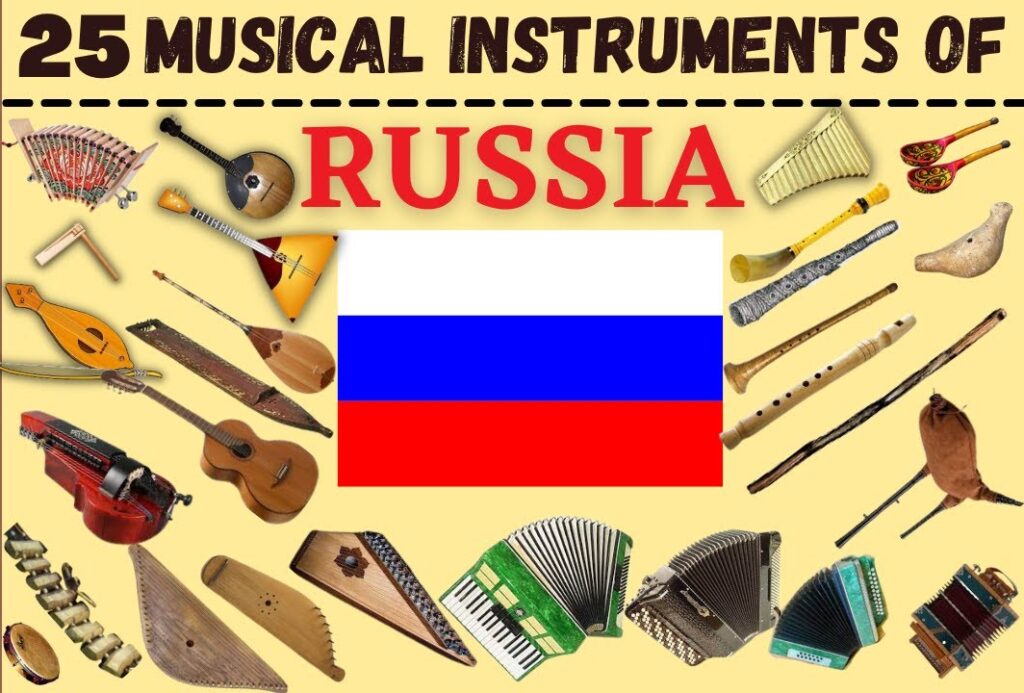
Russian folk music began early in the 11th century, primarily as vocal-centric music with no instruments. Since these early days, Russian music instruments have been through a fairly tough journey. Music instruments were actually prohibited for many years, but that didn’t stop Russian folk music from developing and its popularity from spreading. The first Russian musical instruments were simple. However, over time, more sophisticated instruments were introduced. Let’s take a look at 15 traditional Russian musical instruments that are used in Russian folk music!
1. Domra

The Domra is a string instrument that belongs to the lute family. It’s found in several cultures, like Russian, Ukrainian, and Belarusian music. The domra’s history begins in 1896 when one of the students of Vasily Vasilievich Andreyev found a string instrument that was broken in a stable. The instrument landed in the hands of Andreyev, who developed it to be the instrument we know today. The domra is famous for its round body and long neck with 3-4 metal strings. However, Russia is famous for the three-stringed version. When played in a balalaika orchestra, domra plays the lead melody. It’s held like a guitar and can be either played with a pick or fingers. Tamara Volskaya is a well-known player of the domra.
2. Balalaika

The Balalaika is another type of lute very similar to the domra. Some even say that it descended from the Domra. But they are very different to look at and the balalaika had a distinctive triangular body. The history of the balalaika dates back to the 17th century when a group of people called “Skomorokhi” performed around Russia using domras and balalaikas. Ordinary people loved those performers, but the church and the authorities hated them. So, Tsar Alexei Mikhailovich ordered the burning of all the instruments used by the “Skomorokhi” and to punish whoever used them. Balalaika didn’t achieve its popularity until Andreyev passed by a peasant plating it. Andreyev learned how to play it and sought the help of a violin maker to develop this amazing instrument. And that’s why Vasily Andreyev earned the nickname “father of the balalaika.”
3. Accordion
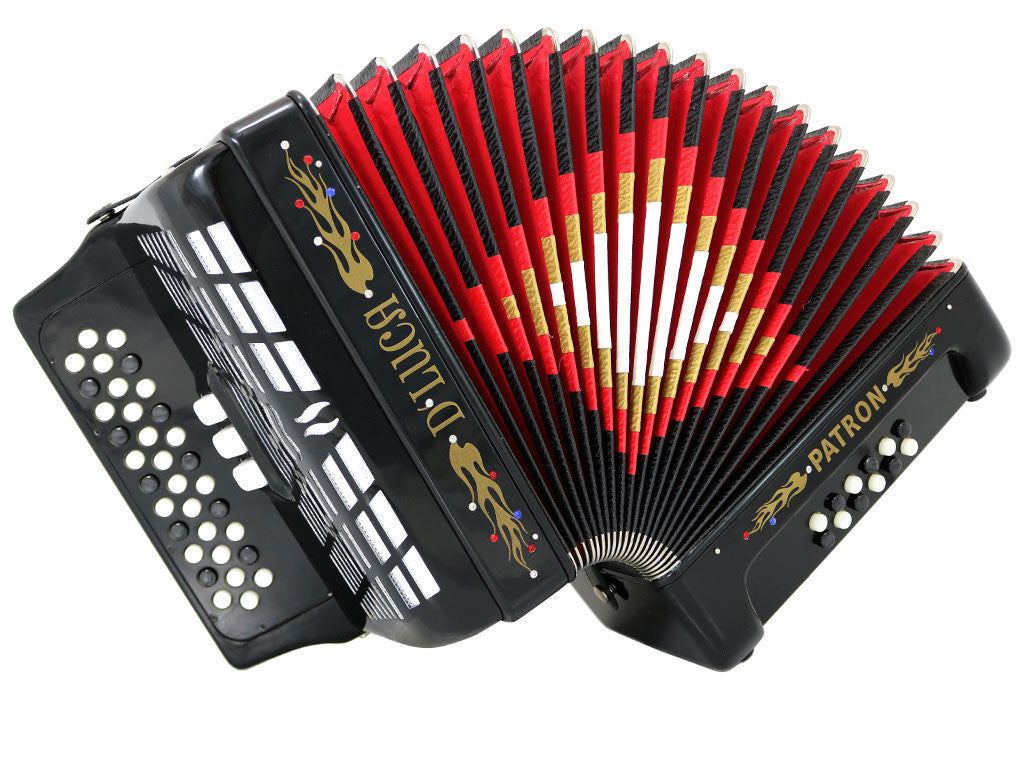
In Russia, the Accordion can refer to three different instruments: Garmoshka, Bayan, and the traditional Accordion. The accordion came originally from Europe and made its way to Russia to eventually become a Russian national instrument and the soul of folk music. Timofey Vorontsov was the first accordion inventor in Tule in 1820, followed by Ivan Sizov in 1830. By the late 19th century, Russia was manufacturing more than 700,000 accordions per year. Although there are lots of types of accordion, the chromatic accordion is the most popular in Russia with many composers writing pieces for solo accordions as well as in ensembles.
4. Treshchotka
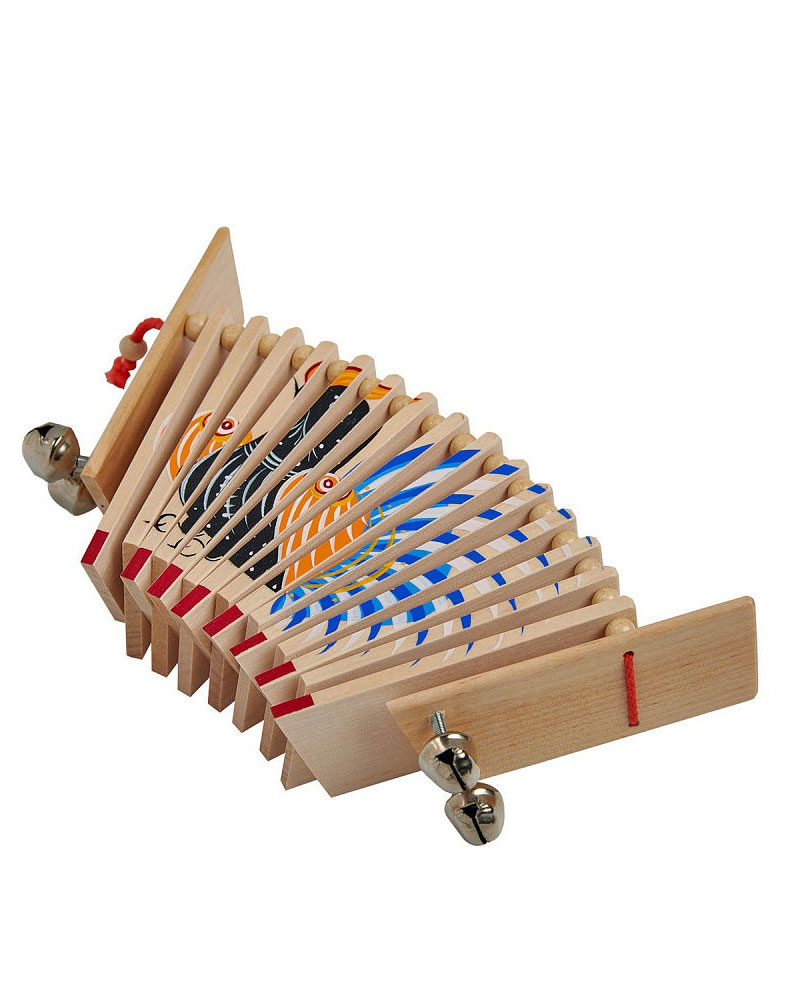
The Treshchotka is a type of Russian percussion instrument that means “rattle.” This unusual-looking instrument makes the sound of cracking and hand clapping. It’s made of a set of 10 to 30 thin oak slats that are threaded together by a tough string. To play the treshchotka, hold it by the end of the strings, stretch it like an accordion, and then squeeze the slats together. To produce different rhythms, volumes, and sounds, the musician can use different levels of force as well as varying the slats’ angle to produce different sounds.
5. Gusli
The Gusli is known to be the oldest East Slavic multi-string instrument. It belongs to the zither family as the strings are placed horizontally on the body. It’s played by plucking with either your fingers or a mediator depending on its size. The sound produced by a gusli is so comforting and calming and was often used as an accompaniment to telling fairy tales. There are several types of gusli instruments with different body shapes and numbers of strings. The most popular are the Krylovidnye gusli with a wing-shaped body with 4 to 14 strings, and the Shlemovidnye gusli with a helmet-shaped body, and 11 to 36 strings. Lastly, is the rectangular desk-top gusli, with its 55-66 strings. In 1914, N. P. Fomin created another version of the gusli that uses a keyboard. With this type, the performer plays with his left hand on the keys and plucks the strings with his right hand.
6. Zhaleika
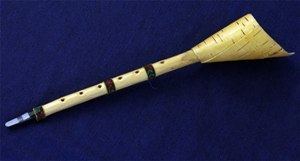
A Zhaleika, which is also known as the “Russian folk clarinet,” is one of the most popular Russian wind instruments. Its design consists of a wooden pipe of 10 to 20 cm (3.9 to 7.8 inches) long with between 3 and 7 finger holes to produce different pitches. It also has a single reed that is made of cane or goose feather, and the end bell is either made of cow horn or birch bark. It was used in the past by shepherds to collect animals because the sound of zhaleika can be heard from a distance of up to 6 km.
7. Lozhki

The Lozhki is another type of Russian percussion instrument that consists of two wooden spoons. Yes, you read that right! Since ancient times, the Eastern Slavics used percussion instruments in war and hunting rituals, as well as in singing and dancing, and lozhki has been a part of these rituals. In the 19th century, spoons were used in choirs and folk music orchestras. Those musical spoons are made of wood which is harder than what regular spoons are made of. They also usually have longer handles and the ladle has a polished surface. There are various techniques for playing the lozhki. Lozhki players can play a set of two, three, or even four spoons to produce different pitches. They can perform solo, accompanied by singing and dancing, or play with other instruments.
8. Buben

A Buben is yet another Russian percussion instrument that’s also known by the name “Russian tambourine.” It’s a handheld instrument that consists of a narrow round frame with a membrane that’s made of either rawhide or man-made materials. The membrane is stretched on the outside of the frame. Usually, the frame of a Buben has little bells or pairs of jingles in its slots. Skomorokhi (medieval jesters of sorts), and bear tamers would often use Buben in their performances. Folk virtuoso Buben players do all sorts of tricks, such as banging it on their knees, head, and feet, tossing it up in the air and catching it, and of course beating it up with hands, fingers, and elbows.
9. Volynka
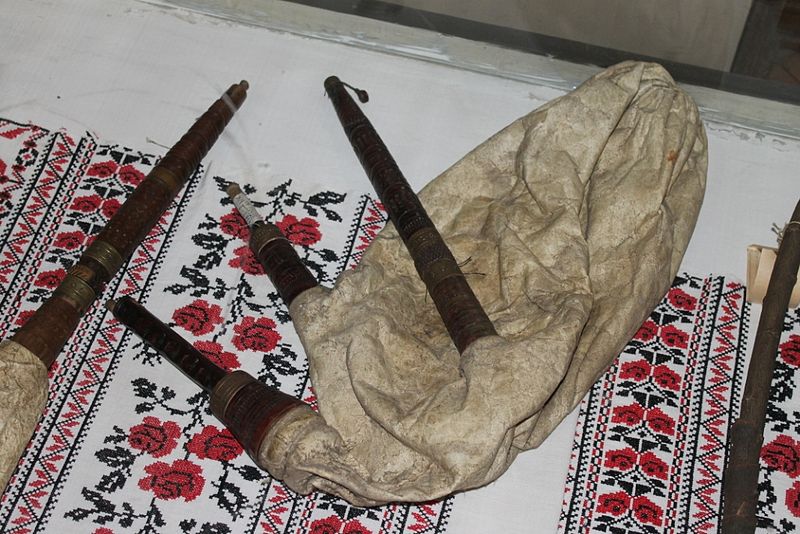
Volynka, or Volinka, is the name given by Russians to their version of the bagpipes. The bagpipes aren’t originally a Russian instrument, but it has its part in Russian folk music. The bagpipes became a part of Russian instruments in the late 18th century when Matthew Guthrie, an antiquarian, saw the Finns living in Russia playing this instrument. The traditional bagpipe was made of undressed goatskin which of course made the instrument not pleasantly smelling. Later on, every Russian village started making its own volynka. They made the bag out of goat, pig, or sheep stomach. The volynka has a chanter with finger holes and there’s a reed in the mouthpiece. The volynka has either one or two drone pipes.
10. Bayan

The Bayan was created in the early 20th century and ever since it became a stable Russian folk music instrument. It’s a type of chromatic button accordion. However, the bayan has its unique sounds. It sounds different from Western accordions and produces a much fuller bass sound. Although the instrument was made to fulfill the requirement of folk music, it’s used to compose classical music. Vladislav Zolotaryov and Sofia Gubaidulina are both famous musicians who composed several music pieces that include the bayan.
11. Rozhok

The Rozhok is another ancient Russian wind instrument that’s history is thought to date back to the 17th century. The rozhok takes the shape of a straight conical pipe with one thumb hole, five finger holes, and a mouthpiece that is cut taking the shape of a small cup. It’s easy to differentiate this instrument with its conical bell-shaped end. The tube is made from birch, maple, or juniper with juniper rozhok producing the best sound characteristics. Rozhok has several names, such as Shepherd’s rozhok and Russian rozhok. However, in the late 19th century, it became famous for the name “Vladimirskiy rozhok.” This was due to the success of a rozhok choir that came from the Vladimir region. His choir members were all simple shepherds with no prior classical music education.
12. Gudok
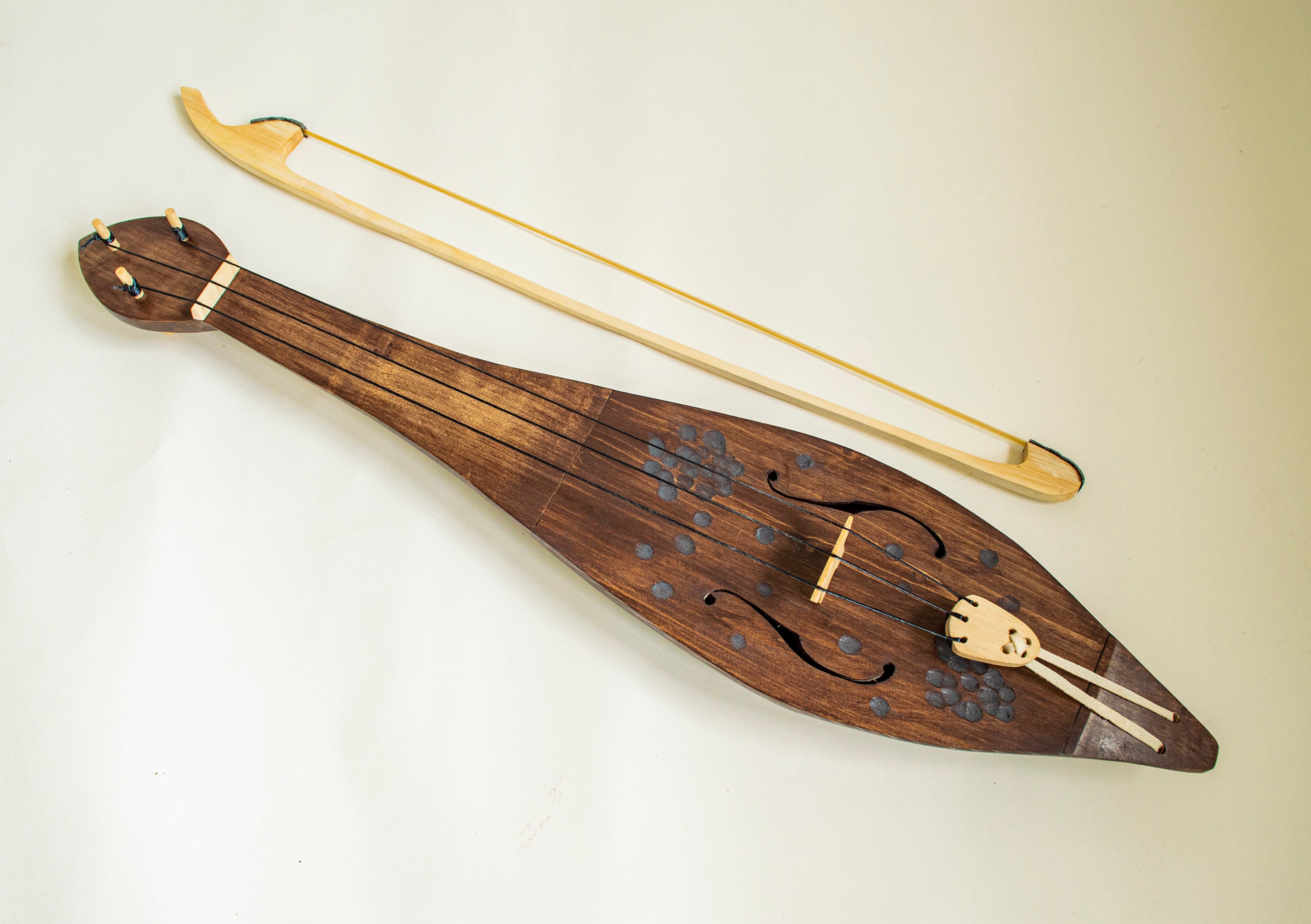
The Gudok is another ancient Russian string instrument that was a favorite of the Skomorokhi. That instrument is characterized by its pear-shaped wooden body, short fretless fingerboard, and three strings. It’s played with a bow and is held on the musician’s lap or knees like a cello or a viola. Although the gudok was popular in Russia for a long time, and it even survived Aleksey Mikhaylovich’s time as a Tsar, it couldn’t survive the domination of western music. Unfortunately, gudok disappeared for several centuries from Russian culture and was replaced by the violin. Some efforts are being made by folk music groups to bring it back to life and hopefully, they’ll succeed.
13. Garmoshka

Garmoshka, or the Russian Garmon, is another traditional reed instrument like the bayan and the accordion. The garmoshka has bellows and two-button keyboards on both sides. The buttons of the right side keyboard play the notes of the diatonic scale while the buttons on the left side keyboard play the primary chords along with the bass notes. The garmon appeared in Russia in the 18th century. It’s smaller in size than the bayan and the accordion and produces a higher sound. Folk ditties and couplets performers love to use the garmon in their performances. The garmoshka along with the bayan and accordion was used to raise the fighting spirits of the soldiers during World War II. Fun fact: those who can play the garmoshka are considered the most popular in their village.
14. Svirel
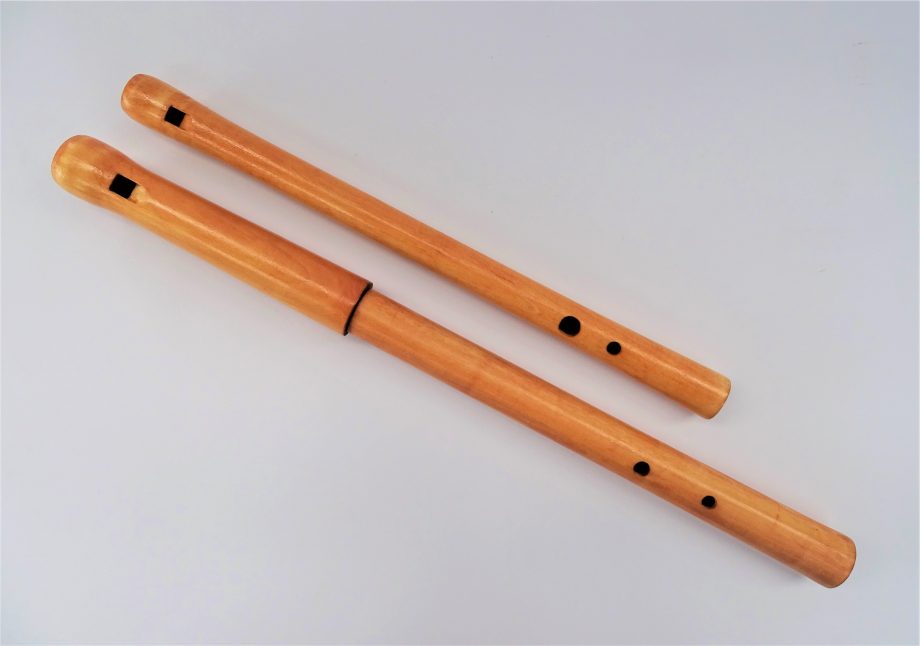
The Svirel is an old wind instrument that’s quite popular in Russian folk music. It’s thought that Lel, the son of Lada, the Slavic goddess, played the svirel. He would make his svirel using birch branches in the spring. This wind instrument is a wooden pipe and sometimes metal. It consists of six finger holes and a whistle device that looks like a beak on its upper end. The preferred wood for making svirel is hazel, maple, ash tree, and buckthorn. You can still find modern folk orchestras using the svirel in their music.
15. Kalyuka

By now, we know that Russia has various wind instruments, and the Kalyuka is one of them. Kalyuka is a traditional Russian folk music instrument that is similar to the overtone flute. It’s a hollow tube with no tone holes along its body like modern flutes. Traditionally, kalyuka were made from dried hollow umbellate plant stalks which made the instrument fragile and used for only one season. Nowadays, kalyuka is made from PVC for more durability. The length of a kalyuka ranges from 30 cm to 80 cm which depends on the player’s height. Traditionally, kalyukas were used by peasants after haymaking.


Blacksmithing
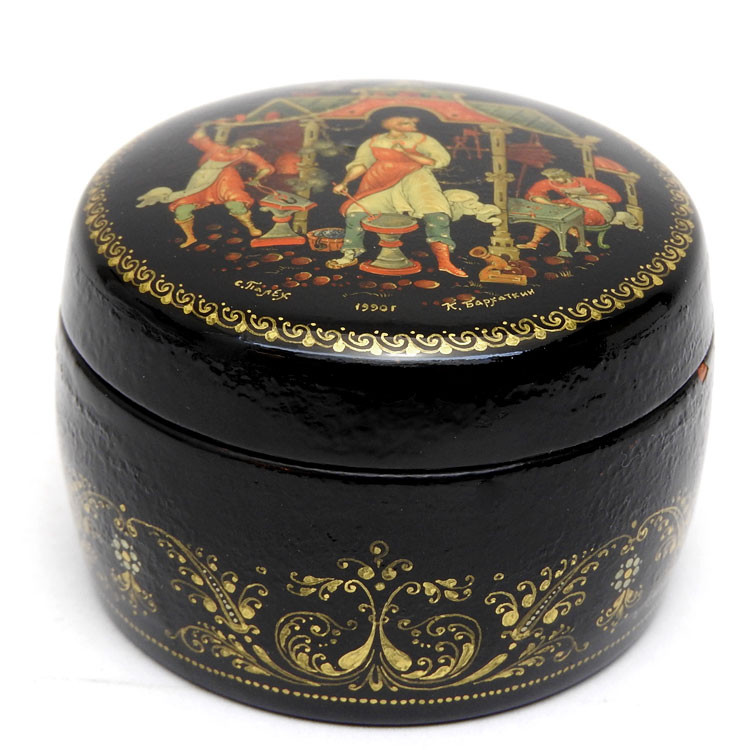

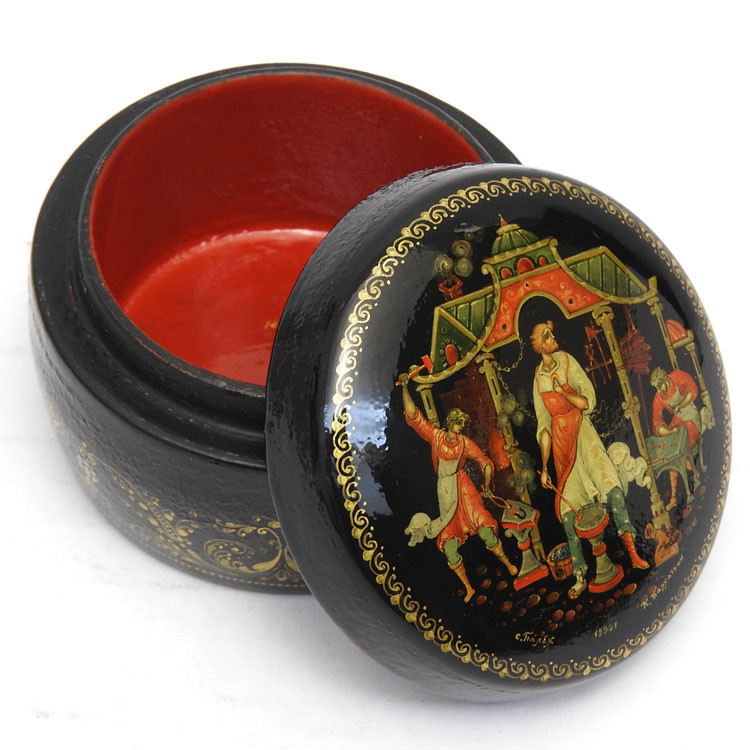
The most ancient folk craft in Rus was blacksmithing. Blacksmiths forged instruments of labor, tools (iron shovels, scythes, sickles, knives, saws, paddle locks), and weapons (swords, sables, arrowheads, chain armors, and helmets). An independent business was “gold-smithing”, i.e. jewelry. Masters produced ingenious jewels– bronze amulets and jewelry: pendants, buckles, kolts, and grivnas (ancient earrings and necklaces). Jewelry was made by granulating technique (an item was soldered with a pattern consisting of a great number of beads) and filigree (a pattern was applied with a fine wire soldered to a metal surface, then the spaces between cloisonné partitions were filled with colored enamel). Thus they produced highly-valued jewelry, made by plique-a-jour technique, typical Russian jewelry. The jeweler’s technique of Russian masters was very complicated and their items enjoyed great demand in many countries of the world.
Pottery

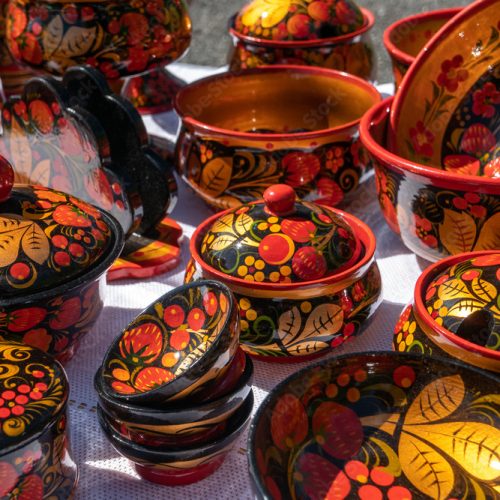

Pottery became a full-fledged business a little later than blacksmithing. It was not until the XI century when a potter’s wheel was invented. Along with various houseware, the Russian potters of that time were making bricks.
Woodworking
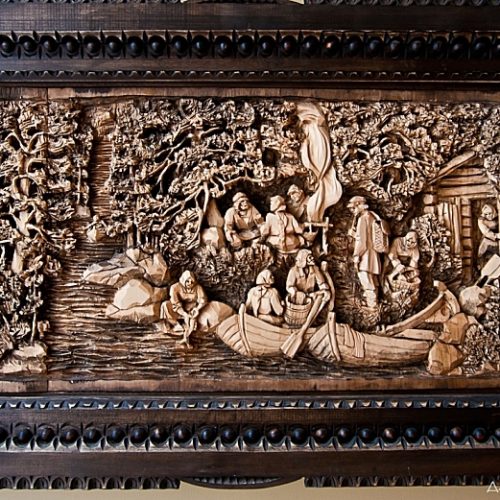

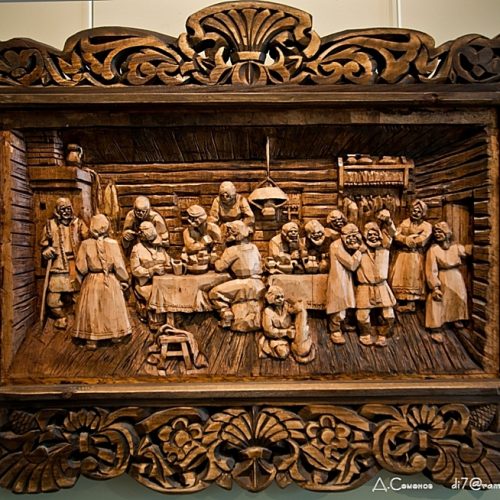
Pre-Christian Rus was already conversant in molding and embossing, ceramics and embroideries, mastered fine skills of enameling. Kievan artists mastered bone carving, niello, metal engraving, ornamented tiles, and glasswork.
But Rus was more skilful in woodworking. Wooden buildings, izbas, (peasant’s log huts) and mansions, gates and bridges, fortress walls, as well as boats and household utensils were generously decorated with carving, which formed their appearance.
Art Painting
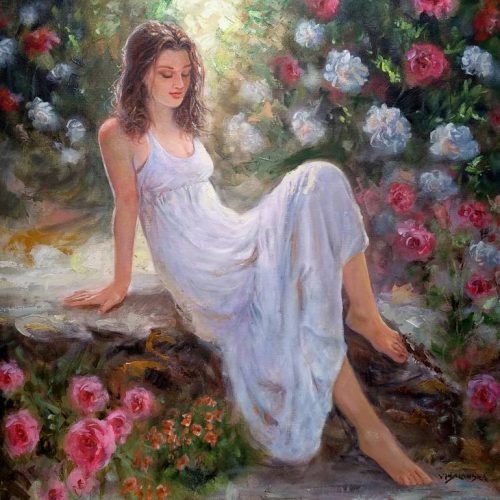
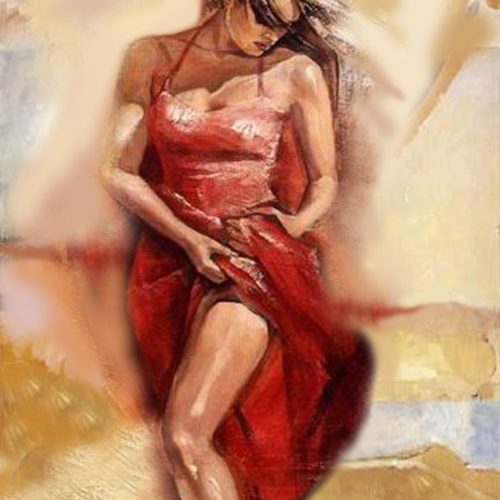


From time immemorial Rus was famous for its china and art painting skills. Different schools and various directions of these folk crafts were even established, namely:
Gzhel is chinaware with a stylish blue painting on a white background. Its name originated from the locality, near Moscow. Pottery has been existed there as early as in the XIV century. Gzhel Ceramics is famous and popular all over the world.
The Zhostovo floral painting (name of a village near Moscow) is a decorative oil painting on metal trays with a subsequent lacquering: brightly colored flowers and fruits painted on a black background.
The Palekh miniature painting (by name of a district center in Ivanovo region) is a painting applied to varnished items, made of paper-maché. Jewel boxes and chests with popular, folk, literature, historical, and religious subjects were painted in bright colors on black backgrounds. The art of the Palekh miniature painting dates back to the XV century. Initially, the Palekh artists were engaged in icon painting. The ancient painting technique is handed down from generation to generation.
The Khokhloma painting is a hand painting on wood. This craft is more than 300 years old. Plates, saltcellar, chairs, and shelves are painted with outlandish, flame-scarlet flowers. Their know-how is that they are lacquered two or three times and then tempered in ovens. As a result, the lacquer is getting yellow, and wooden painted plates look like precious gilded dishware.
Lubok, the cheap popular print is a Russian folk picture made by means of impression on paper, applied by a wooden printing block. Sold in the fairs as early as in the XVII century up to the beginning of the XX century, this popular print was considered one of the most mass arts of Rus. The subject of the popular prints was quite various: ranging from religious and moral ones from folk epos and fairy tales to historical and medical ones normally captioned by edifying or jocular texts, narrating about the customs and everyday life of that time, comprising a popular wisdom and humor.
Crafts in Tula

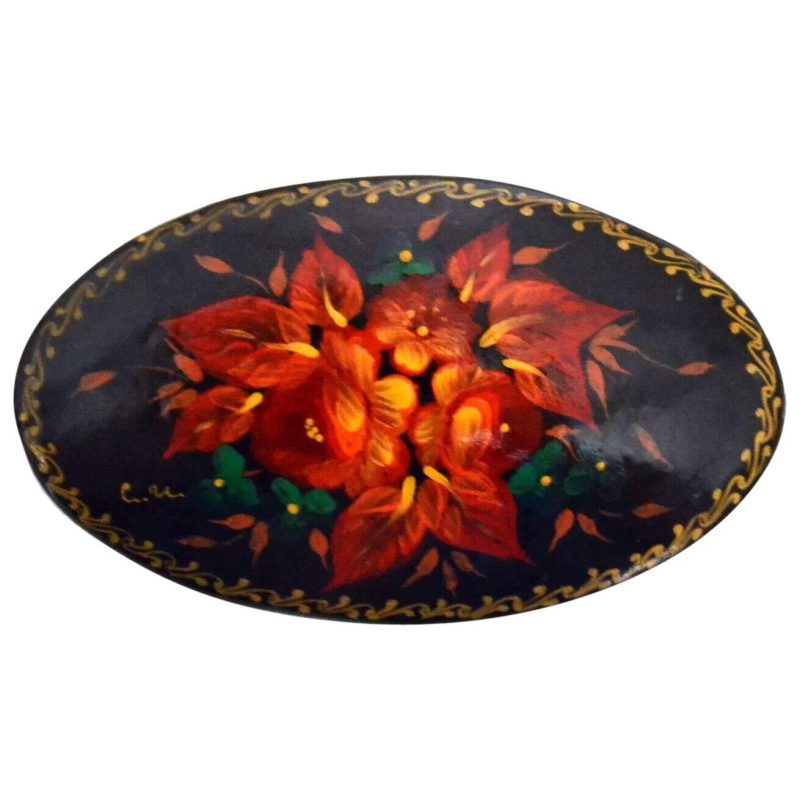
Tula samovar can be met in any corner of Russia and far outside it. The samovar in Tula is known to appear as early as in 1778. There are about 200 kinds of samovars. As a matter of fact, Tula has a samovar museum. But the main Russian souvenir is considered a Russian nesting doll – Matryoshka, a hollow brightly painted wooden doll, from which the same dolls, one smaller than the other, can be taken out one after another.
Famous Russian Paintings
1. Composition VII – Wassily Kandinsky
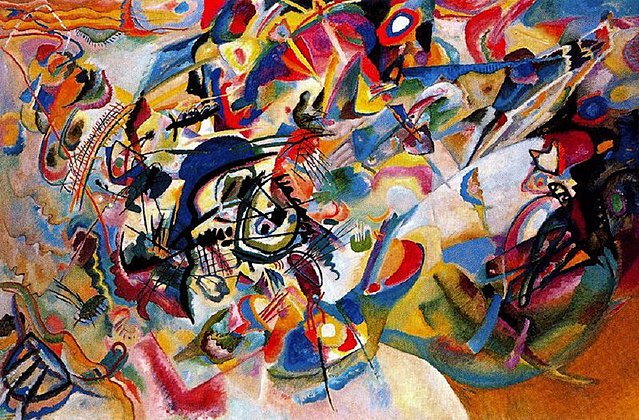
One of the most famous abstract paintings in Russian culture and the world over is Wassily Kandinsky’s work titled Composition VII. Kandinsky is regarded as one of the most famous Russian artists to have ever lived. This painting is one that was created at a time when artists began to delve into many different areas of abstract visual expression. Kandinsky’s painting was done in 1913 and quickly became known throughout Russia, as well as much of Europe for its unique color combination and kaleidoscope-like appearance. The work was instantly famous for its strange, yet striking coloration, as well as the various shapes that were arranged across the canvas by the artist. Kandinsky’s early career revolved around the study of law and economics. Only later in life would he study art and begin painting works that were considered abstract in nature. Kandinsky was somewhat of a Russian Renaissance man who was as widely known for his written works as he was for his paintings. He has long been known as the “Father of Abstract Art” as he was one of the first painters who truly explored the abstract form of expression in a new style that was quite unlike any other the world had ever seen until that point.
2. The Ninth Wave – Ivan Aivazovsky
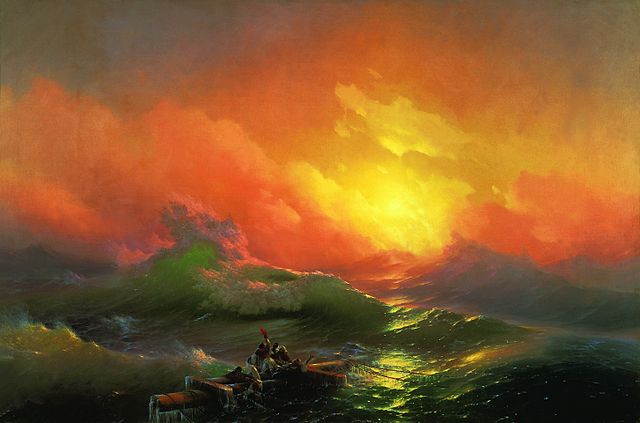
Known for painting scenes that revolve around seafaring life and sailing, Ivan Aivazovsky produced one of the most famous paintings of any Russian artist in his work titled The Ninth Wave. The artist had spent most of his life at sea and his paintings of the ocean would largely reflect his passion for the sea in all its different forms. The Ninth Wave was painted in 1850 and portrays a scene in which three sailors are lost at sea, floating on a beam from a wrecked ship. The work drew considerable attention from critics and enthusiasts inside Russia, as well as throughout the world at the time. The painting’s title and focus are said to come from a commonly-held belief that many sailors have of a cycle of waves that come in a series of nine different waves, the ninth being the largest and most destructive. Despite the beautiful sunset, the sailors are clinging to the beam for dear life, hoping to be able to withstand the beating that the waves will undoubtedly have on them during the night.
3. The Last Day of Pompeii – Karl Briullov
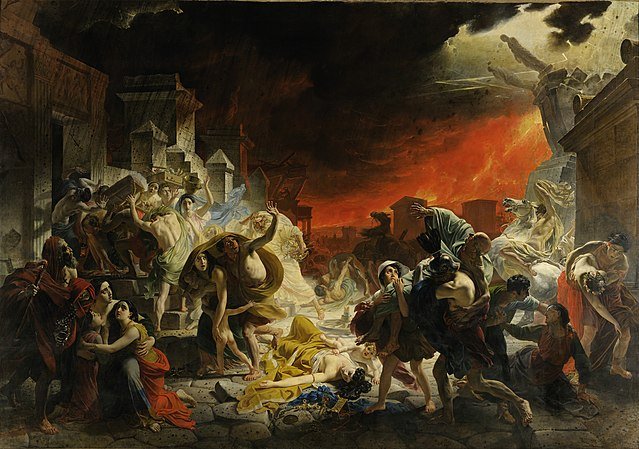
The unimaginable scenes of the eruption of Mount Vesuvius have captured the world’s imagination for centuries. Karl Briullov sought to portray what he believed to be the final moments of the city of Pompeii would have looked like in his work titled The Last Day of Pompeii. This painting was done sometime between 1830 and 1833 and has long been known as one of the most famous Russian paintings ever created. The work emerged during a time when Neoclassicism had begun to wane and the emergence of Romanticism was on the rise.
4. Volga Boatmen – Ilya Repin
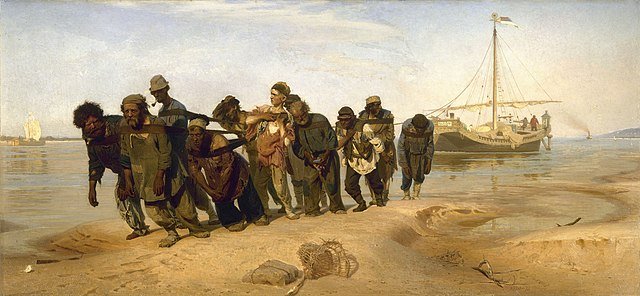
In 1873, Russian painter Ilya Repin first exhibited his work titled Volga Boatmen to art critics and enthusiasts. The painting immediately drew a considerable amount of attention for the artist’ incredible ability to capture such a realistic-looking scene. It is a prime example of socialist realism art. The painting would quickly become famous throughout all of Russia and has since been praised as one of the most famous works of art in the country’s history. Repin drew inspiration for this particular work as he walked alongside the shores of the Neva River one day years earlier. He noticed a group of boatmen, exhausted from the day’s toiling, lugging a boat to shore and preparing to rest after their hard work.
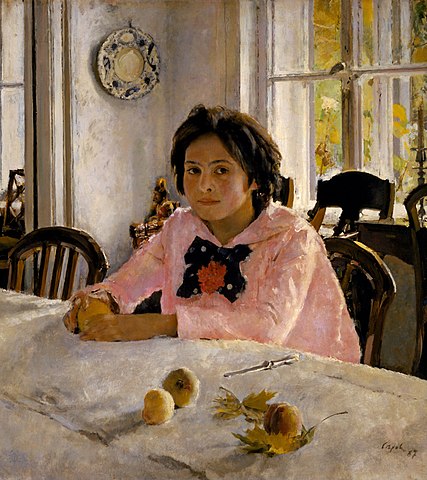
Realism was one of the most important and popular styles in Russian art culture in the last few centuries. Artists from all over Asian countries drew inspiration from scenes of everyday life and worked to paint them in a manner that brought them to life like no other art style had done before. Valentin Serov created one of the most well-known paintings in1887 that was considered a pillar of the Realism movement. His painting titled Girl with Peaches features a young girl seated at a table while the sunlight pours into the room behind her. The colors and the manner in which the light plays on each minute detail of the painting make the work appear almost as realistic as a photograph. The artist went to great lengths to paint the subtle ways in which the sunlight both illuminated that room and cast shadows across parts of the scene on the canvas.
6. The Rooks Have Come Back – Aleksey Savrasov
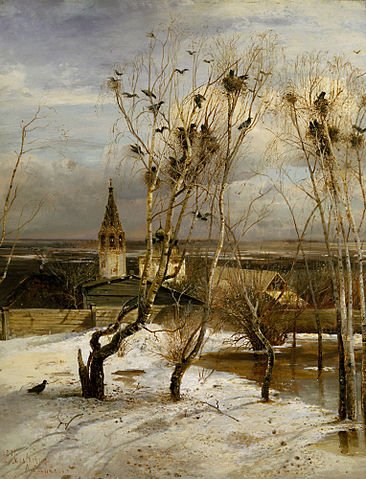
The Russian landscape, for much of each year, is gripped with brutally cold temperatures and many blankets of snow throughout much of the country. Russian artist Aleksey Savrasov painted a scene that captures the end of the icy winter season in his 1871 work titled The Rooks Have Come Back. The artist sought to portray a small, but monumental instance in the Russian landscape that points to the end of the long winter and the subtle beginning of spring as the rooks have finally returned to their roosts from the warmer southern climate. The painting is one that has long been examined in Russian schools as children are often made to write essays based on their impression of the painting.
7. La Mariee – Marc Chagall
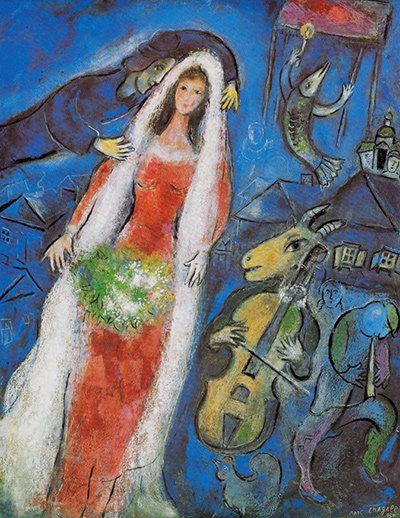
One of the more famous modern paintings that have been produced in Russia is Marc Chagall’s work titled La Mariee. The painting was done in 1950 and portrays a scene from a traditional Russian wedding in which a young bride is adorned in a vibrant red dress and holds a bouquet of flowers in her hand as she awaits her groom. The painting is famous for its strange, but curious use of perspective and composition as the woman and other figures in the painting seem to be stretched upward and at a diagonal angle. The bright colors of the bride’s dress are further emphasized by the darkened background which is a dark blue color that virtually blends into the night sky.
8. The Black Square – Kazimir Malevich
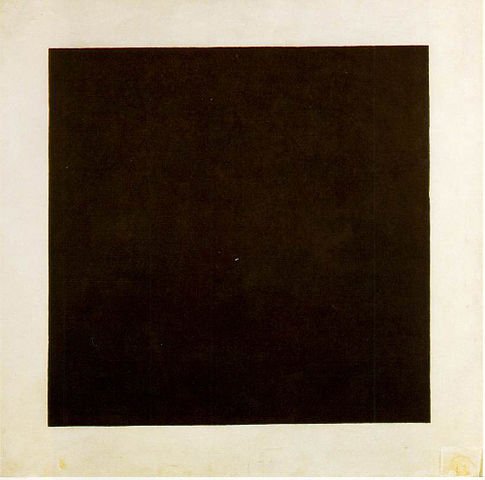
One of the most unique paintings in Russian culture is also perhaps one of the most well-known. The Black Square is a work that was done by Kazmir Malevich and features a simple, black square that is painted on a linen. Malevich painted the first version of this work in 1915 and would later create other versions that were done in the 1920’s and 1930’s. Forensic technology reveals that the painting was actually done over a much more colorful and complex composition. Art critics and enthusiasts have viewed this particular work with mixed reviews, many of them noting its standing as one of the seminal works of modern art.
9. Trinity – Andrei Rublev
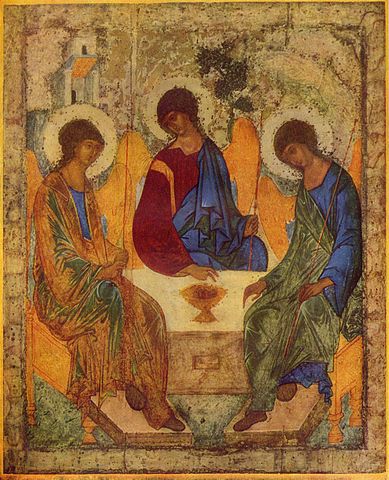
Russia has long been a nation with Christian theological origins dating back to the 10th century or earlier. Andrei Rublev created one of the most iconic religious paintings the world has seen in his painting known as Trinity. This painting was done in 1425 and is recognized as one of the most famous Russian paintings ever created. Rublev painted many different Christian scenes and various images that harken back to the earliest teachings of Orthodox Christianity. This particular painting depicts the Holy Trinity, which is made up of God, Jesus, and the Holy Spirit. This work is also one of the most recognized Christian paintings ever done.
10. Morning in a Pine Forest – Ivan Shishkin
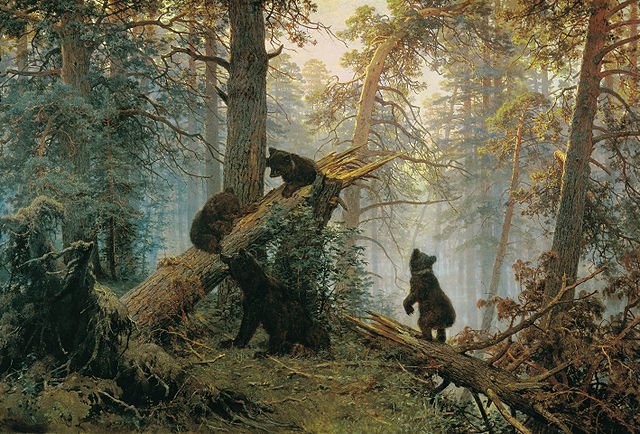
Ivan Shishkin was a member of a group of artists known as the Peredvizhniki, who are also called The Wanderers. This group was known for its staunch protest against academic regulations that prohibited the study of certain subjects in Tsarist Russia. He painted a work known as Morning in a Pine Forest in 1889 that would later become one of the most famous Russian paintings of all time. Shishkin and other landscape artists during this time period were captivated by the rugged beauty of the Russian wilderness and many of them sought to depict the natural beauty of their home country with as much realism as they could. Many art enthusiasts and critics alike have praised Shishkin for his immaculate realism, most notably in the trees that he painted. This work and others by the artist that focus on landscapes across Russia are some of the most beloved works ever done by a Russian artist.










